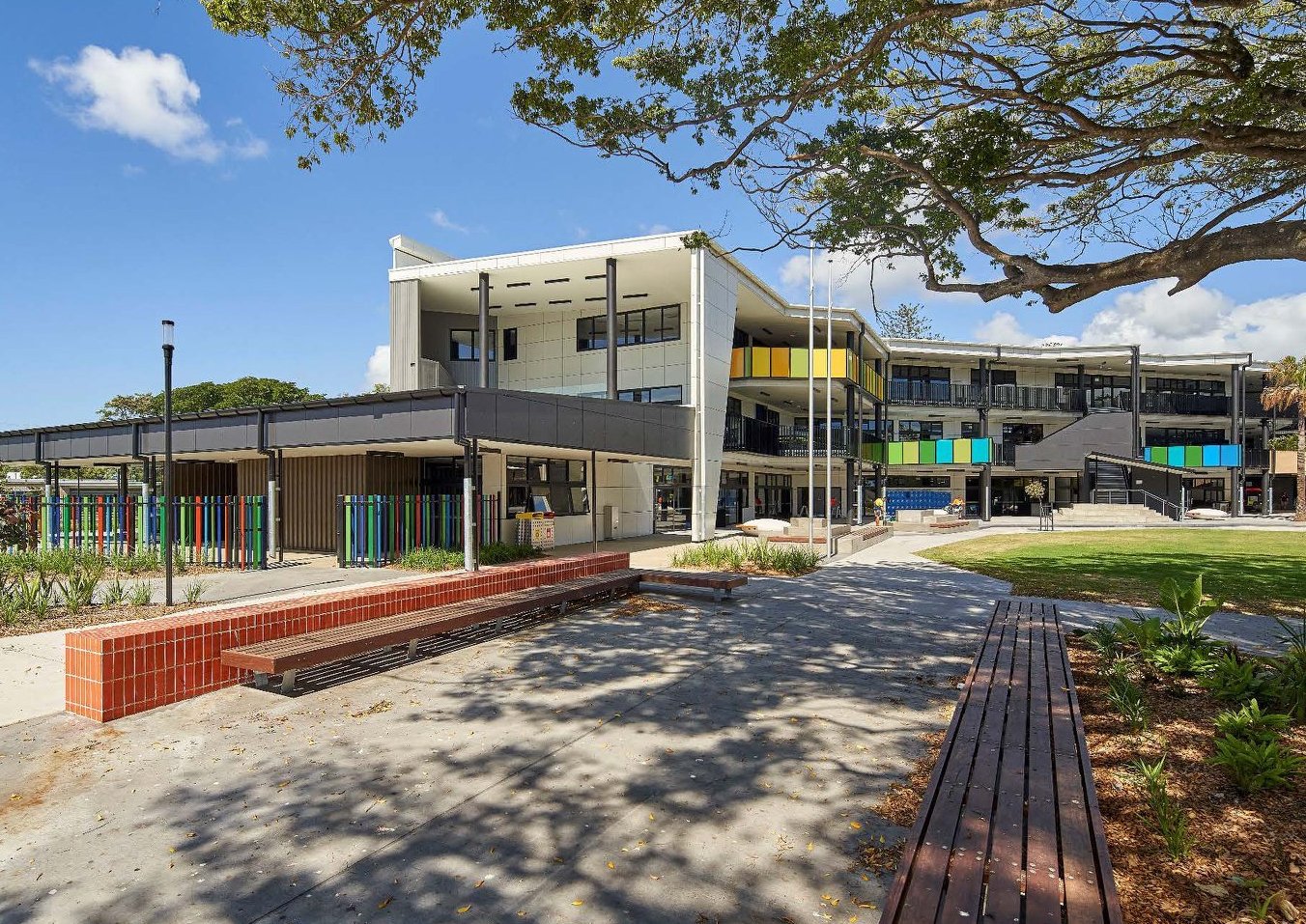
UNSW Associate Professor Paul Osmond says buildings and cities need to change after this pandemic.
UNSW Associate Professor Paul Osmond is urging people to soak up nature on balconies and gardens or exercise in parks during COVID-19.
‘We need nature, at a minimum for viewing, but ideally through immersion and interaction,’ the lecturer from UNSW Built Environment says.
‘Particularly now, as a way of de-stressing and preserving mental health.’
He refers to Nature-Deficit Disorder which was first mentioned by US author Richard Louv in his 2005 book titled Last Child in the Woods: Saving Our Children from Nature-Deficit Disorder.
The non-fiction writer coined the term to enable talk about research which proved the negative effects on human health when people were removed from nature.
For children in learning, and adults’ workplace productivity
The Associate Professor says research shows there are also improvements for children in learning, and adults’ workplace productivity levels increase when they have a connection to the natural world.
A/Prof. Osmond says people should not reinterpret the ‘stay at home’ message to mean they have to ‘stay inside’ here in Australia, unless they are under quarantine.
‘It’s perfectly okay to go outside, as long as you’re maintaining the 1.5 metres of social distancing,’ he says.
A/Prof. Osmond says being surrounded by nature improves the immune system, and a person’s physical and mental health by alleviating issues such as stress and anxiety.
But being ‘somewhat sealed up inside a house or an apartment’ can lead to ill-health due to the air quality, which is often poorer than the outdoors, he says.

Indoor pollutants not helping
A/Prof. Osmond says indoor pollutants can arise from new carpet, new furniture or freshly painted surfaces by releasing what are known as volatile organic compounds (VOCs).
‘And as we come into winter, the burning of gas from heaters and stoves can create various nitrogen oxides,’ he says.
For people who have open fires, they are often breathing carbon monoxide and sulphur oxides, A/Prof. Osmond says.
‘So it just makes sense to head outdoors or open windows during these tighter restrictions, especially now while there is less pollution from industries and transport,’ he says.
‘Even if it is just by walking down the street rather than in the park, at least you are seeing some green bits of biodiversity which helps with your overall mental health and wellbeing.’
Pot plants can help filter the air
But for those who do have to remain inside, A/Prof. Osmond highly recommends pot plants for their ability to filter the air.
‘The combination of the plant itself and the microbes in the soil capture VOCs, such as benzene, formaldehyde and other compounds derived from paints and timber-treated products, then break it down,’ A/Prof. Osmond says.
‘So even on this smaller scale, on balconies, or indoor environments with pot plants around, there are multiple benefits.’
Urban planning and the pandemic
A/Prof. Osmond says discussions and research about what the design of our buildings, cities and neighbourhoods will look like once COVID-19 begins to retreat, are being ramped up in emails, blogs and other forums.
‘The question is, how do we draw lessons from this pandemic to design houses, office buildings and cities in a way which makes us more resilient to future pandemics, while also being more people-friendly?’ he says.
A/Prof. Osmond says a historical example can be seen in the modernist architecture movement that grew from the lessons of the Spanish flu and earlier pandemics, such as cholera.
‘The idea was cleanliness and a streamlined form, by getting rid of curlicues and ornamentation which would collect dust. And to bring more sunlight into houses to kill bacteria,’ he says.

Emphasis on living architecture
Emerging from this pandemic, there is likely to be more emphasis on ‘living architecture’, such as green roofs and walls, and a step away from the reliance on air conditioning and heating in Australia.
‘Ironically, a typical office building with the glazing and sealed windows derives from that modernist architecture movement with the requirement for heating and cooling,’ he says.
‘But if you look to history,’ he says, ‘before air conditioning, even in the hot Middle East they were using wind catchers and water as cooling agents.
‘In colder climates, the use of thermal mass, such as heavy masonry construction, were a way to reduce heat loss in winter.’
Australians should make the most of the temperate climate
So, here in Australia we should make the most of the temperate climate, which for about two thirds of the year is neither too hot nor too cold, and move towards better building design, he says.
This building design will be about minimising energy use, acknowledging climate change and about how we can live a lot healthier and happier in the future, he says.
A/Prof. Osmond says high carbon-dioxide levels in poorly ventilated rooms can lead to ‘what is often called sick building syndrome.
The middle ground between high-rise high density and urban sprawl
We need to find a middle ground between high-rise high density living and urban sprawl in our cities, as a lesson from this pandemic, he says.
Urban sprawl can lead to greater greenhouse gas emissions due to more people commuting to work, he says, as well as destroying viable agriculture land on the outskirts of cities such as Sydney and Melbourne.
He suggests Australia should look more into the traditional terrace housing, townhouses and walk-up apartment buildings as alternatives, often referred to as the ’missing middle’.
‘That way you also won’t get the same kind of problems that you can get in high-rise high-density cities where it’s difficult for people to physically distance themselves in a pandemic.’
Recent stories, information and updates regarding COVID-19
Fresh air federal funds for Northern Rivers schools in need
Eighteen schools in the Northern Rivers division of Richmond have received $25,000 each as part of the federal government’s School Upgrade Fund, Labor Member for Richmond Justine Elliot said last week.
COVID-19 pandemic has cut life expectancy globally
COVID-19 reversed earlier trends toward longer life expectancies. During the pandemic, life expectancies globally dropped by 1.6 years according to a new study published in the Lancet medical journal.
COVID-19 update for New South Wales
Let’s not forget that Covid-19 is still a big issue in our community with 31,935 cases reported across Australia in the last week – an average of 4,562 cases per day.
Five graphs you need to see before the Global Carbon Budget...
The Global Carbon Budget is about to be refreshed, giving the world a critical insight into how efforts to reduce greenhouse gas emissions are (or are not) progressing.
Public transport mask mandate to end
Masks will no longer be mandatory on public transport from tomorrow, Wednesday 21 September.
NSW Police: be COVID-vigilant at Splendour in the Grass
SW Police are urging festival-goers at this weekend’s music festival to celebrate in a safe and responsible manner, whilst also being aware of COVID-Safety measures.
COVID-19 update for the NNSWLHD – May 23
The Northern NSW Local Health District reports that to 4pm yesterday, Sunday May 22, there were 40 COVID-19 positive patients in hospital in Northern NSW, with one of these in ICU.
AEC says COVID voters can phone from home
The AEC says that voters who have recently tested positive for COVID-19 will be able to phone in their vote in the federal election.











